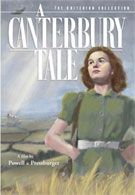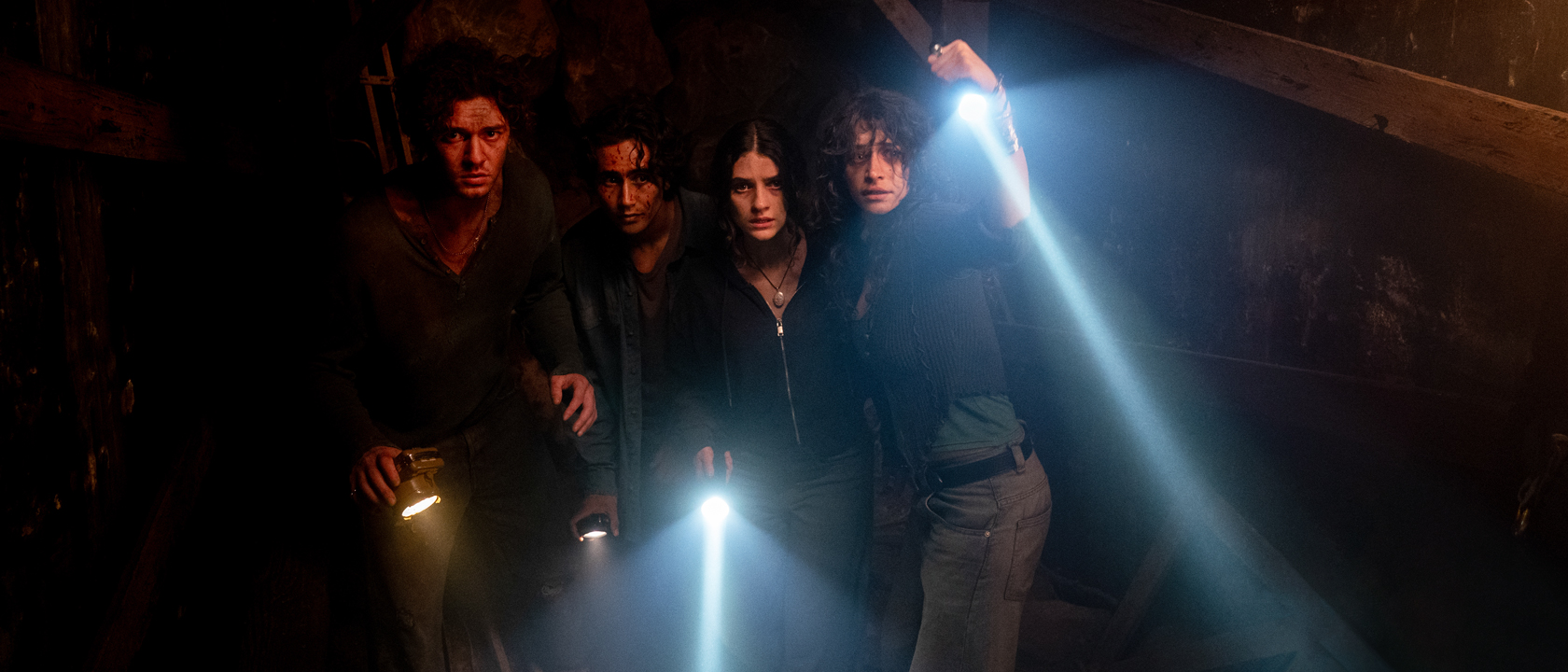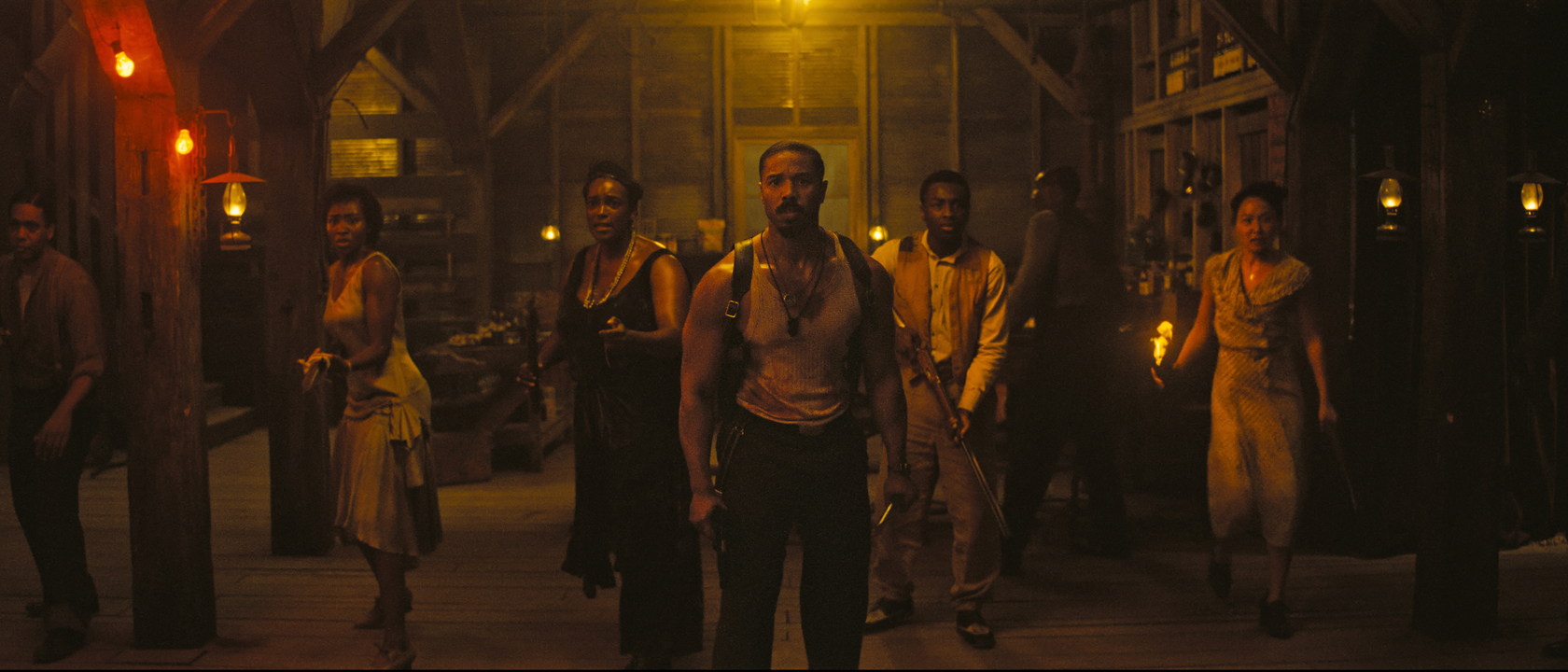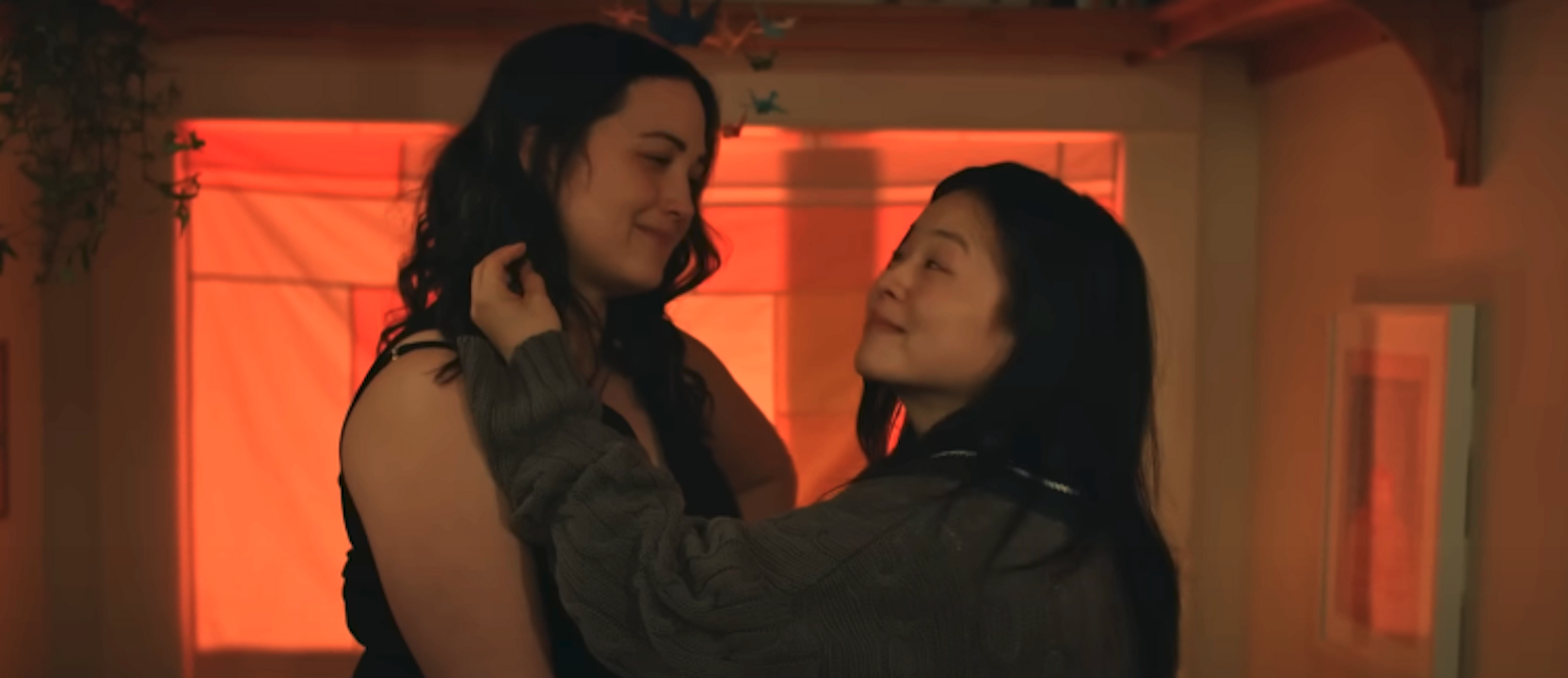Tales of whimsy and tales of woe, as the pilgrims trek to Canterbury. Right is right and know is knows, as they stop the glueman’s tomfoolery. Luckily, directors Michael Powell and Emeric Pressburger do more justice to Chaucer than I in their homage to British heritage -- A Canterbury Tale. As cultural history plays an important role in the film, A Canterbury Tale plays an important role in the history of the film art. And, The Criterion Collection has blessed us with a wealth of supplements to boot. Many of Michael Powell’s and Emeric Pressburger’s (The Red Shoes, Black Narcissus) films were classics before they were ever released, and A Canterbury Tale is no exception. Playing off Geoffrey Chaucer’s The Canterbury Tales, the film follows a young woman farmhand, Alison Smith, an American G.I., Bob Johnson, and a British officer, Peter Gibbs, during their layover in a small village on their way to Canterbury during World War II. While the whimsical tale echoes the pride in ancestral knowledge, the execution of the story is what makes this film work.
During their limbo in the small village, the trio investigates the recent slew of glue-ings - an unknown culprit lurks in the shadows and attacks young women by putting glue in their hair. As they mingle with the townsfolk in hopes of gaining insight about the perpetrator, we learn that Alison's lost her fiancé to the war , Peter longs for his civilian career of organ player for the local and Bob hasn’t received a letter from his girl in over seven weeks. These hints of sadness haunt the characters during this time of war, when they are called for a higher duty. Powell and Pressburger’s dedication to their actors is unmatched, particularly in the case of Bob Johnson (played by real-life Sergeant John Sweet). In the beginning of the film, the brash, uncultured American is seen as a clueless loudmouth. Although this may be attributed to the arc of his character, it also appears to be the green around the Sergeant’s acting gills. As the film progress, we see the Sergeant become more comfortable in front of the camera, and his character becomes sincere and likeable, especially during Bob’s playful interaction with the local children who help solve the glueman case.
Perhaps more compelling than Bob’s catharsis is Sergeant Sweet’s own progression. The marvel is that you don’t see Powell’s and Pressburger’s directorial hands pushing Sweet, but you watch his screen presence become more powerful and welcome - a clear reaction to his direction. This guidance, however, is not limited to Sweet’s character. We see how the local magistrate, Thomas Colpepper, goes from condemned suspect to a misunderstood patriot for ancestral importance. While his methods of generating interest in the history of the English country side and the cultural importance of Chaucer’s mythology are in question, his motivation is admirable. On paper, Colpepper could be colored as the clear cut “bad guy,” but Powell and Pressburger don’t condemn him. They let him speak his peace, which resonates through the three characters who have come to appreciate their culture and the role they actively play in it.
Yet, the directors’ watchful eyes don’t rest solely on their characters; A Canterbury Tale is, shot for shot, as beautiful as their Technicolor masterpiece, The Red Shoes. Every pan, dolly and shift in lighting has a purpose, be it narratively or thematically. As we watch these pilgrims traverse the countryside and hear their stories, we also get a sense of Powell’s and Pressburger’s own pride in their British heritage. A Canterbury Tale serves, not only, as an homage to Chaucer’s tales but also as a testament to the importance of history. Just as the characters in Powell’s and Pressburger’s A Canterbury Tale are blessed, a blessing has been bestowed upon us with this two-disc set from The Criterion Collection. Let’s begin with the film itself. The video transfer is amazing and it’s fair to say that the film has never looked better. Free of nearly any artifacts and blemishes, save a couple of scenes with washed out blacks, this 1:33 : 1 full frame transfer (preserving the original aspect ratio) serves as a beautiful exhibition of black and white cinematography. The film’s soundtrack is presented in Dolby Digital Mono and, while the dialogue is clear, the grandiose score tends to overpower the single channel. So, some viewers may prefer to switch their receivers to stereo to open up the audio and let the film’s music breathe.
On disc one, commentary by the astute film historian, Ian Christie, helps to put the film in its historical context and explain the negative to lukewarm response the film received from audiences and critics when it was originally released. Also included on the first disc are two sequences that were edited into the American release after its negative reception. The two scenes run about 6 minutes and are a welcome addition to the wealth of supplement material found on disc two.
Pop in disc two and you’ll find more insightful interviews and accounts of the actors and filmmaking. Starting off, a fun new interview with Shelia Sim (Alison Smith) that provides little information on the filmmaking process, as she seems to not remember quite a bit of it, but is entertaining nonetheless. “John Sweet: A Pilgrim’s Journey,” a 23-minute featurette that follows Sergeant Sweet’s return to Canterbury in 2000, shows how the film impacted Sweet and his career, as he is swept up in nostalgia upon his return to the mythical land.
The other features include “A Canterbury Trail,” which takes us to the important filming locations within Canterbury, “Listen to Britain,” a 1942 documentary about the film’s relevance and the sister piece “Listening to Britain,” a video installation inspired by the film by Victor Brugin. You’ll also find a booklet with essays by Graham Fuller, Peter von Bagh and Sergeant John Sweet; all three pieces are worth your time. If you take the journey to Powell’s and Pressburger’s Canterbury, you will be blessed with one of the best DVD releases of the summer.
Some Jokester Created Internet Prank About Ryan Coogler Expanding His Sinners Universe, And I'm Just Cracking Up Over The Commenter Who Called It 'Sinematic Universe'
I Went To The Epic Universe Portal In New York, And I'm Rattled At How Much Bigger The Real One Apparently Is
As Gerry Turner Goes Public With New Girlfriend, Another Golden Bachelor Veteran Weighed In On Who Theresa Nist Could Date On Bachelor In Paradise











